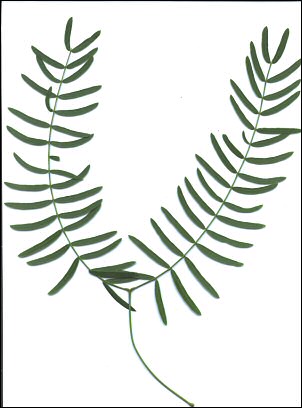

Within a particular region, botanists often can identify plants from their leaves alone. This is only possible because of the tremendous variation found in leaves. Unfortunately for the beginner, the variation is not limited to between different kinds of plants, but also occurs between individuals and even between leaves of a single plant.
Nevertheless, on average, leaves within a species tend to have limited variability, many times allowing identification. The bean family, for example, has a number of species in the Chihuahuan Desert, but many can be told by their leaves. For example, a leaf that forks, with each fork possessing four to eight pairs of miniature, narrow leaflets on its sides may well belong to a Screwbean Mesquite; a similar leaf but with 10 to 30 or so pairs per fork, though, likely is a Honey Mesquite.
It takes a lot of practice, but with time, you should be able to
identify all sorts of plants without having to have flowers or fruit. And, helpfully,
most people won't have a clue if you foul it up!

Contributor: Arthur H. Harris, Laboratory for Environmental Biology, Centennial Museum, University of Texas at El Paso.
Desert Diary is a joint production of the Centennial Museum and KTEP National Public Radio at the University of Texas at El Paso.

A single leaf of Honey Mesquite, forked once and with each fork having about 16 pairs of leaflets. The leaf, about 12" long, was scanned.